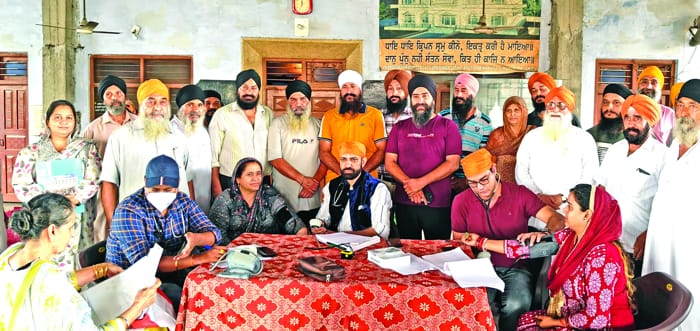Built Environment, and Early Cardiovascular Disease closely interrelated: Dr Sushil

STATE TIMES NEWS
JAMMU: Continuing his efforts of providing cardiac healthcare to each nook and corner and aware masses about the ill effects of Cardiac ailments Head Department of Cardiology GMCH Jammu Dr Sushil Sharma held a day long cardiac awareness cum health check up camp at Gurudwara Shri Guru Singh Sabha, Basti Govindpura, Simbal Morh, Jammu with main aim of educating masses about the concept of built environment and its influence on cardiac morbidity and mortality.
While interacting with the people, Dr Sushil stated that built environment refers to the physical environment constructed and shaped by humans as opposed to the natural environment. It comprises the transportation system, land-use patterns, and design features that could either promote or undermine population health. There is overwhelming evidence that the environment in which humans live has a profound effect on their overall health and life expectancy. In the prior decades, the concept of the exposome, which encompasses the entire set of aspects people encounter and are exposed to throughout their life course, has had growing scientific influence.
Conceptually, there are two main pathways proposed. The first pathway is between active built environmental exposure and behavioural risk factors. For active exposure, one needs to actively use of the environment to be exposed. Attributes such as walkability, which is comprised of individual elements like sidewalks, connected streets, and proximity to key destinations, can facilitate a more active lifestyle. Access to and availability of certain food resources may either improve or diminish diet quality, depending on whether these food resources are greengrocers or fast-food outlets, for example. The second pathway is between passive built environmental exposure and CVD. This includes exposures that occur when one is simply present in the environment, such as air pollution, residential noise, and ambient temperature, Dr Sushil said.
He elaborated that epidemiological studies have examined the role of a few environmental factors with early cardiovascular disease, the relationship with the broader environment remains poorly defined. Exposures to environmental and social stressors at various life stages shape the development of CVD differently. Therefore, it is crucial to adopt a life course approach to identify sensitive periods or windows of susceptibility. Robust evidence has demonstrated that individual- and neighborhood-level social determinants of health contribute to cardiovascular risk and the development of CVD. However, interactions between built and social environments (eg, neighborhood crime and social connections) in relation to CVD risk factors and outcomes have rarely been studied, particularly considering a life course approach. A better understanding of such interactions is essential to design multilevel interventions to reduce environmental and social exposure at the same time that likely optimize their effectiveness, he said.
Management committee of Gurudwara Singh Sabha Jodh Singh, Inderpreet Singh, Manjeet Singh, Tejinder Singh, Anmolak Singh, Gurdev Singh , Sandeep Singh and Gurdeep Singh appreciated the efforts of Dr Sushil and his team for conducting cardiac awareness cum health check up camp in their area.
Others who were part of this camp include Dr Venkatesh Yellupu and Dr Dhaneshwer Kapoor. Paramedics and Volunteers include Ranjeet Singh, Amnish Dutta, Gourav Sharma, Maninder Singh, Rohit Nayyar, Rajinder Singh, Rahul Vaid, Mukesh Kumar, Vikas kumar and Nirvair Singh Bali .
